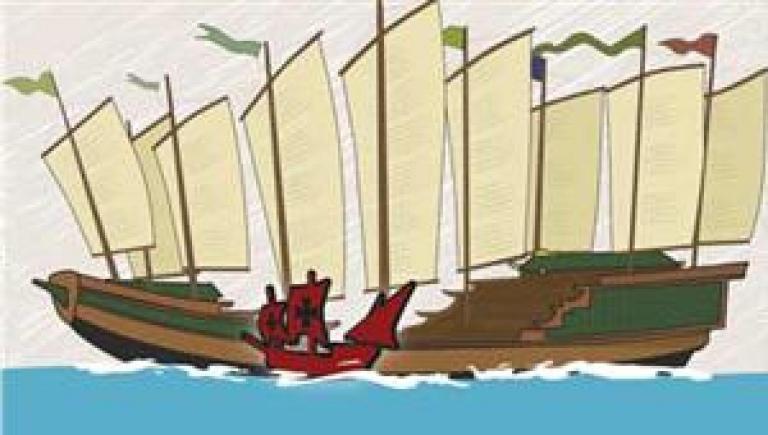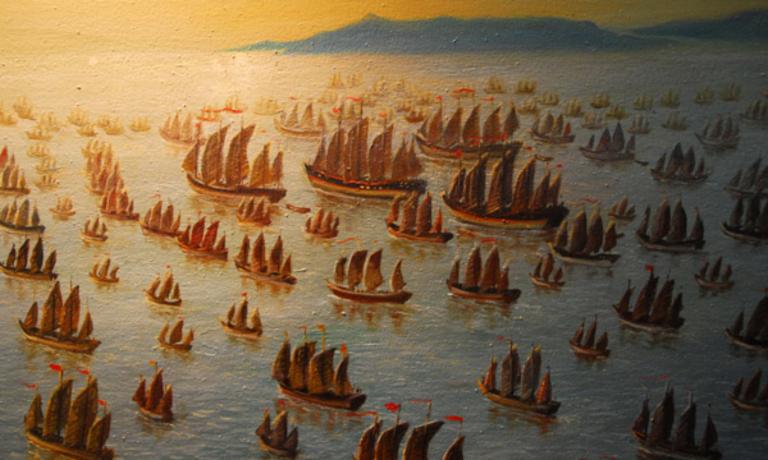Spreading Peace
3 min readWhen Emperor Yongle sent Zheng He on the missions to the Western Seas, he expected to show off the prosperity of the Ming Empire as well as to put his ideals into practice, of making friends with and spreading peace to other countries near and far. Zheng He’s huge fleet was indeed proof of the strength of China at the time. At the same time, the navigator was also fulfilling the emperor’s wishes of developing China’s international relations.

Zheng He’s family chronicles, which came to light in the 1930s, include records of Emperor Yongle’s exhortations before his departure:”Follow the ways of Heavenand the world, do not bully small or weak countries, and spread the blessing of peace.”On all his voyages Zheng He strictly followed the emperor’s instructions. Although Zheng He brought a large armed force along on all seven long journeys, only on three occasions during those 28 years did he deploy troops. The first time was to wipe out pirates in the Palembang area(southeast of present-day Sumatra), to restore order and transport routes. The second and third times he used force was in self-defense: against an attack by a king of Ceylon(now Sri Lanka), and against a gang of rioters from the Sumatra area. None of these acts constituted a violation of the principle of peace laid down by Emperor Yongle.

Of the many places that Zheng He’s fleets reached, they never occupied an inchof anybody’s territory, nor took away the slightest bit of anybody’s property, nor left a single soldier on anybody’s land. Instead, they always presented all sorts of gifts to local kings and their families, chieftains at different levels, and to Buddhist temples. The gifts ranged from cash, silk, porcelain and clothing. to utensils made of iron, copper, silver and gold. Zheng He even brought bricks, tiles and glazed tiles for locals to build temples in some parts of Southeast Asia. Following principles of fair trade, Zheng He’s crew bartered porcelain, silk, tea, and metal utensils with local governments and ordinary citizens for jewelry, spices, medicine, and rare animals. They also introduced to the countries they visited items such as: the Chinese calendar, Chinese medical sciences, and technologies in farming, manufacturing, navigation and shipbuilding.
On every one of his missions, Zheng He would bring envoys from other lands back to China. For example, in the ninth lunar month of 1422 (20th year of Emperor Yongle’s reign), more than 1,200 envoys from 16 states in Southern Africa came to visit China with Zheng He’s fleet. There were also several kings who traveled on Zheng He’s ship back to China. Three of them-from Sulu(now Sulu Archipelago of the Philippines), Borneo(today’s Kalimantan Island) and Gran Molucas(now Mindanao Island of the Philippines)-stayed in China until they died due to illness. When the king of Borneo died in 1408, Emperor Yongle called a recess of the court for three days of mourning. People in some Asian countries still retain fond memories of Zheng He’s visits. One can find many commemorative buildings in these countries, such as the temple named after Zheng He in the Indonesian port city of Semarang. In the Malacca Straits area therecan be found a well said to have been dug by Zheng He.
In 2004, in celebration of the 30th anniversary of the establishment of diplomatic ties between Malaysia and China, the Royal Opera House in Kuala Lumpur staged a large bilingualsong-and-dance drama in Chinese and Malay. Based on Sejarah Melayu, or The Malay Annals, the drama presented the story of Princess Hanbaoli, daughter of Emperor Yongle, who was escorted by Zheng He and a 500-member retinue to her wedding with Sultan Mansur Shah of Malacca. This is one of the many fine stories about the travels of Zheng He.









